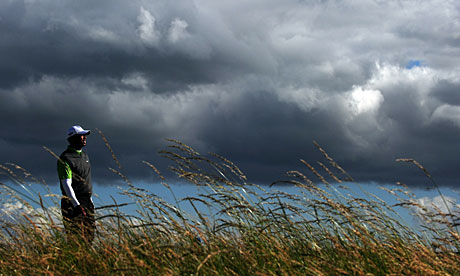Pins, Grounding And Suspending Play
/ Lawrence Donegan (here) and Steve Elling (here) sum up the player complaints from Friday's second round. They fall into two categories: hole locations and suspending play.
Lawrence Donegan (here) and Steve Elling (here) sum up the player complaints from Friday's second round. They fall into two categories: hole locations and suspending play.
From what I saw of the course, the holes were fairly reasonable and not cut on high spots as several players have claimed. There were undoubtedly a few very difficult locations, like the 11th, which was almost inaccessible along with the 8th and 10th on high spots. But does every hole location have to be accessible? I think not.
As for the decision to suspend play and restart in conditions that soon were just as bad as they were when play was stopped? That's a trickier proposition.
I'm not buying the "they did it for Tiger" conspiratorial venting of players who were understandably cranky about getting in their playing zone and then having to pull up, only to face the same or worse winds when they went back to the course.
The issue of green speed is certainly on the table in this debate since the greens look faster than they were in practice rounds and it takes so little to put these greens over the edge. But ultimately, this may just be about the quirkiness of the rules of golf, as Bob Harig notes.
The reason for such consternation over a golf ball that rolls is the penalty that can be incurred if you ground your club. A player who rests his putter behind a ball is deemed to have moved the ball if the wind blows it.
"I understand the rule, but it's such an unfair rule because you haven't really done anything wrong and the ball starts to roll and you incur a penalty," said Trevor Immelman, who shot 74. "That was the kind of thing you had to be careful of today."













